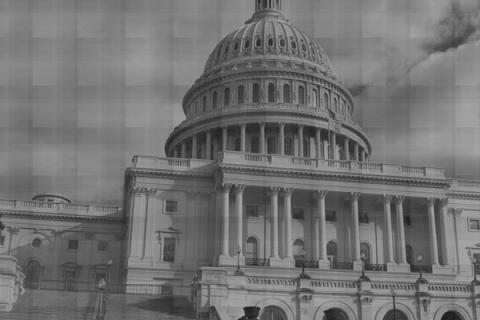 (Arizona) - Political weapons sometimes backfire, helping rather than harming the opposition.
(Arizona) - Political weapons sometimes backfire, helping rather than harming the opposition.
An anonymously funded 8 1/4 x 13.5 inch piece opposing Prop 121 was sent this week to Arizona voters. It features a large, sadistic photo of a wide-eyed woman with duct tape covering her mouth, appearing to tie a women’s fear of being silenced or abducted to the actions of Open Elections supporters.
Ironically, the mailer may be backfiring, generating YES votes for Prop 121.
The proponents of Open Elections are asking the same question featured on the mailer. “Why are Special Interests Trying to Eliminate Your Vote?” The mailer is paid for by Americans for Responsible Leadership (A4RL), a special interest group that has received nearly 1/2 million dollars to oppose 121, but refuses to name its donors. A court case is attempting to reveal the special interests behind money used for this mailer and other actions to oppose measures in California and Arizona. Robert Graham, the agent for A4RL and candidate for Arizona Republican Party State Chair, steadfastly refuses to reveal his donors.
Choice. The mailer claims that if 121 passes, voters will not have a choice of political parties in General Elections. The supporters of the initiative say there is more choice in the primary election thereby increasing voter choice and voice in the General Election.
Under Arizona’s current Semi-Closed Primaries, only registered party members may vote. Independents may vote in the primaries provided they vote a straight party ticket and only then if the Parties let them. Even if a losing candidate in a primary shows strong support, Arizona’s “sore loser” law forbids them from running again in the General Election. The parties, not the people, own positions on the General Election Ballot.
Ted Downing, founder of the Arizona Independent Voting Project who successfully fought for major election reforms as a member of the Arizona legislature noted that political parties have long tailored election laws to limit voter choices. Downing says “under the current semi-closed primaries in Arizona, the candidate is the party faithful’s choice”. This system is scuttled by Prop 121. The top two vote-getters proceed to the General Election ballot by virtue of open competition. “The real choice on Prop 121 is between TOP ONE – party-selected vs. Top TWO – voter-selected candidates on the ballot,” Downing explained.
Prop 121 critics weigh in on the measure on the back of the mailer.
Barbara Klein, President of the Arizona League of Women Voters, is quoted, “one of our greatest concerns is that on the general election ballot there could be only one party to choose from.” Klein misunderstands the very purpose of voting itself. "If Prop 121 passes, elections will no longer be about pick a party but pick a candidate”, says Janelle Wood, a community leader and former independent candidate for Governor. She said "If Prop 121 passes, it will open the way for all registered voters to vote for candidates who best represent the electorate at large."
Warren Severin, Chair of the Arizona Libertarian Party claims Prop 121 “will destroy third parties in Arizona.” He is concerned that under Top 2 “level playing field provisions”, he will need the same number of signatures to get a Libertarian on the ballot as all candidates and may not receive sufficient votes to appear among the top two on the General Election Ballot. No Third Party candidates have been elected to the state legislature since Statehood. “Is this really about the people asking him to take his thumb off the scale of justice?" asks Paul Winger, National President of Abolish Corporate Personhood
Bill Montgomery, Chairman of the Anti-Prop 121 committee demonstrates his complete misunderstanding of Arizona elections by claiming that “Top Two takes away the ability for people to vote for their candidate of choice in the General Election – when it counts most!” Fact check: Of Arizona's 30 legislative districts, party representatives sitting on the Independent Redistricting Committee chiseled out 25 non-competitive, single party dominated districts. This leaves only 5 races competitive where voter choices count in the General Election. Downing, an architect of the measure, points out that under Top Two, all legislative districts will have competitive races between candidates who got the most votes in the open primary. He points out that in California, four Peace and Freedom Party candidates were among the Top Two and are competing on the General Election ballot.
